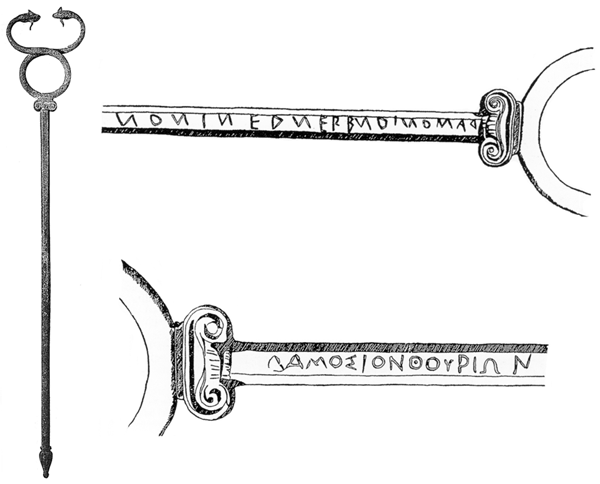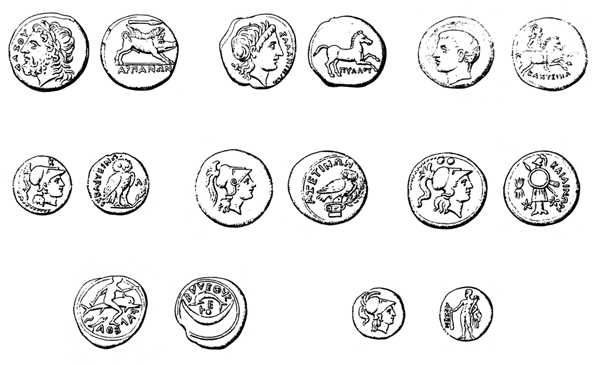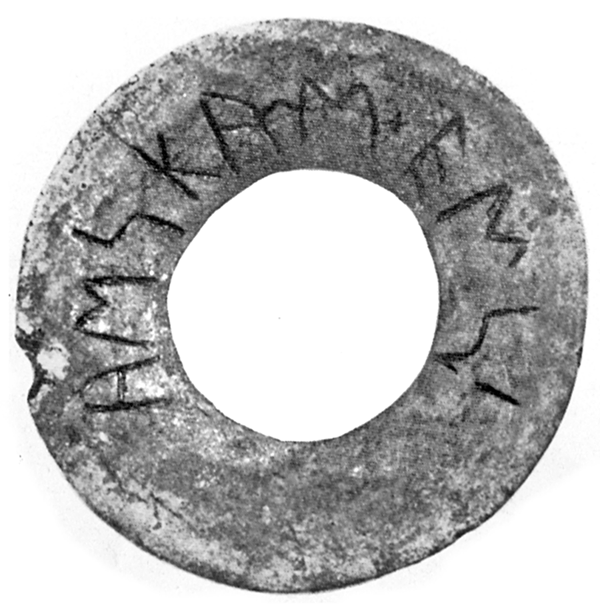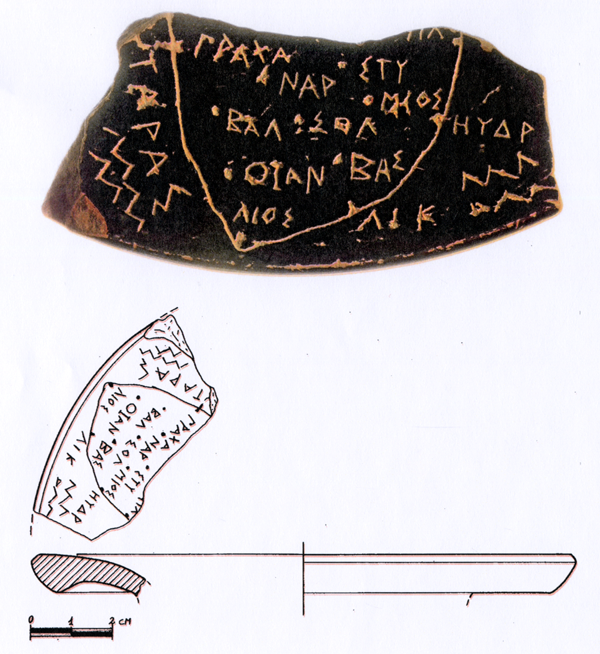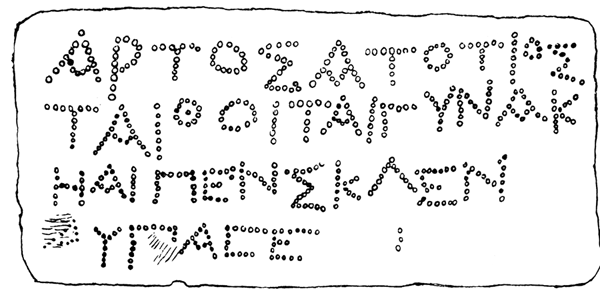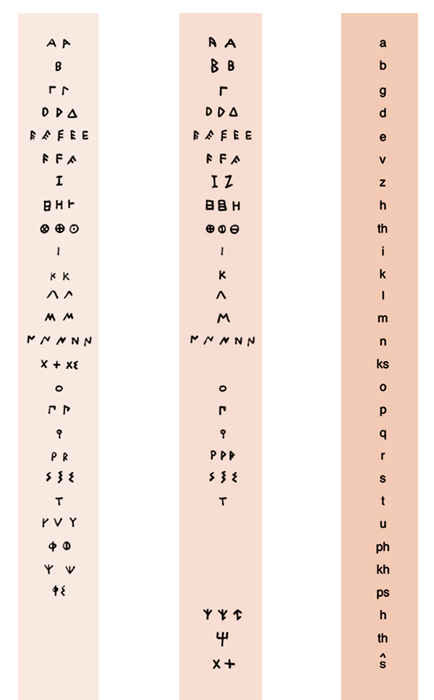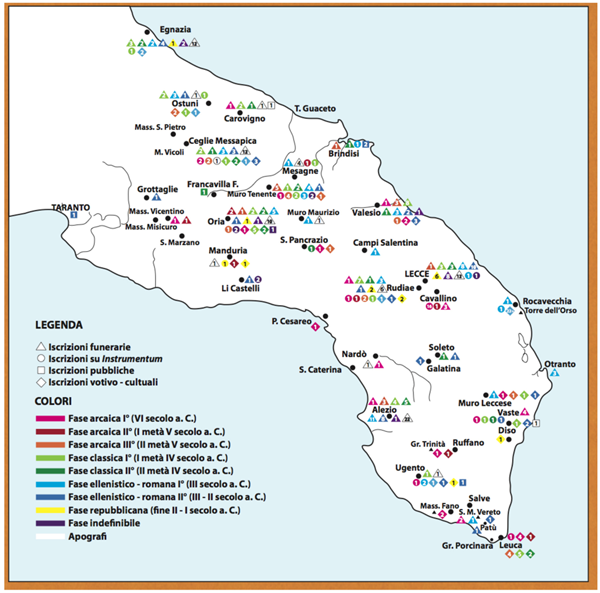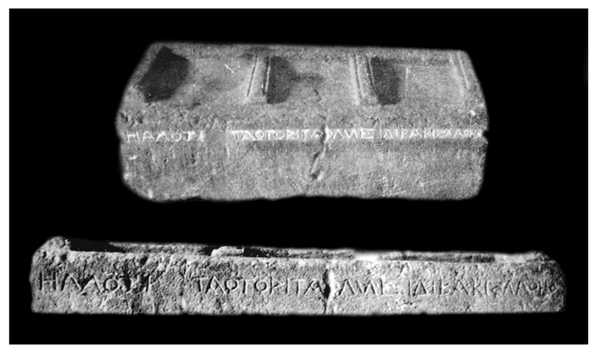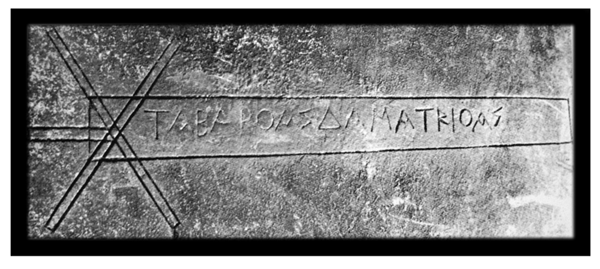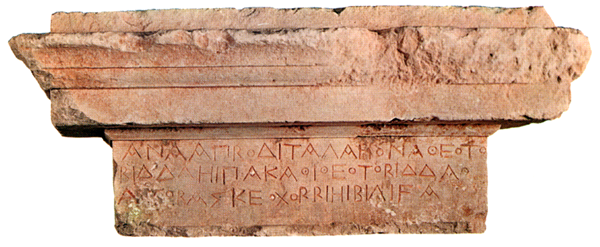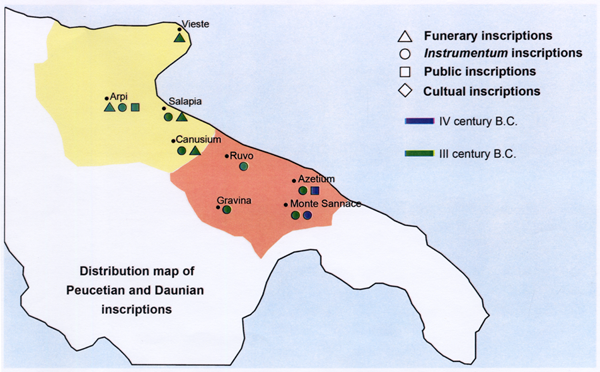
Chapter 2: Mario Lombardo, Iapygians: the Indigenous Populations of Ancient Apulia in the Fifth and Fourth Centuries B.C.E.
WF 13: Inscribed bronze herald staff from Brindisi, now in Naples, Museo Nazionale Archeologico. Images from Lombardo 1999, figs. 9-11, assembled by Giovanni Boffa in the Laboratory of study and digital treatment of literary, epigraphic and numismatic sources (LabLENS), Department of Cultural Heritage, University of Salento.
WF 14: Monetary issues of Arpi, Salapia, Canusium, Rubi, Azetium, Cailia, Valesium, Ugentum. Images courtesy of LabLENS archive, University of Salento.
WF 15: Reconstruction of the Tarentine anathema from the Peucetians at Delphi. Image from Lombardo, 1999, fig. 26.
WF 16: Foot of an archaic hydria from Valesio with a Greek inscription. Brindisi, Museo Archeologico "Francesco Ribezzo". Image courtesy of LabLENS archive, University of Salento.
WF 17: Attic or Italiote fragment of a map from Soleto. Taranto, Museo Archeologico Nazionale. Image from Lombardo 2011, figs. 3-4.
WF 18: Inscription of Artos Atotios from Ruvo. Image courtesy of the LabLENS archive, University of Salento.
WF 19: Tarentine and Messapian alphabets. Image created by Giovanni Boffa, LabLENS, University of Salento.
WF 20: Distribution map of Messapic inscriptions in southern Apulia. Image created by Elena Magnolo, LabLENS, University of Salento.
WF 21: Archaic inscribed cippus from Cavallino. Lecce, Museo Provinciale "Sigismondo Castromediano." Image courtesy of LabLENS archive, University of Salento.
WF 22: Inscribed altar from Valesio. Aradeo (Lecce) private collection. Image courtesy of LabLENS archive, University of Salento.
WF 23: Messapic funerary inscription from Valesio of a priestess of Damatra. Brindisi, Museo Archeologico "Francesco Ribezzo." Image courtesy of LabLENS archive, University of Salento.
WF 24: Votive inscription to Aprodita on an altar from Ceglie Messapica. Brindisi, Museo Archeologico "Francesco Ribezzo." Image courtesy of LabLENS archive, University of Salento.
WF 25: Distribution map of Peucetian and Daunian inscriptions. Image courtesy of the LabLENS archive, University of Salento.
